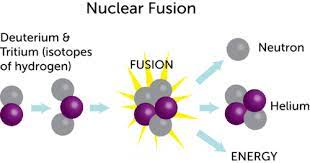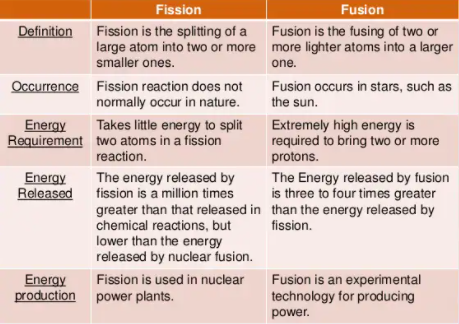Science & Technology
Fusion Energy Breakthrough
- 15 Dec 2022
- 6 min read
For Prelims: Nuclear fusion, Difference between Nuclear Fusion & Nuclear Fission.
For Mains: Advantages of Nuclear Fusion.
Why in News?
Recently a few scientists at the Lawrence Livermore facility, the US have achieved a net gain in energy from a nuclear fusion reaction, which is seen as a big breakthrough.
- China’s Artificial Sun, the Experimental Advanced Superconducting Tokamak (EAST) device replicates the nuclear fusion process carried out by the sun.
What was the Experiment?
- The experiment forced a minuscule amount of hydrogen into a peppercorn-sized capsule, for which scientists used a powerful 192-beam laser that could generate 100 million degrees Celsius of heat.
- It is also called ‘Inertial Fusion’.
- At some other places, including the international collaborative project in southern France called ITER (International Thermonuclear Experimental Reactor) in which India is a partner; very strong magnetic fields are used for the same purpose.
- The laser beam was hotter than the Sun’s centre and helped to compress the hydrogen fuel to more than 100 billion times that of Earth’s atmosphere.
- Under the pressure of these forces, the capsule started imploding on itself and leading to the fusion of hydrogen atoms and the release of energy.
What can be the Future Prospect?
- Attempts to master the fusion process have been going on at least since the 1950s, but it is incredibly difficult and is still at an experimental stage.
- The nuclear energy currently in use across the world comes from the fission process.
- Besides greater energy yield, fusion is also a carbon-free source of energy, and has negligible radiation risks.
- Though the achievement is significant, it does little to bring the goal of producing electricity from fusion reactions any closer to reality.
- By all estimates, use of the fusion process for generating electricity at a commercial scale is still two to three decades away.
- The technology used in the US experiment might take even longer to get deployed.
What is Fusion?
- Fusion is a different, but more powerful, way of harnessing the immense energy trapped in the nucleus of an atom.
- In fusion, nuclei of two lighter elements are made to fuse together to form the nucleus of a heavier atom.
- A large amount of energy is released in both these processes, but substantially more in fusion than fission.
- This is the process that makes the Sun and all other stars shine and radiate energy.
What are Advantages of Nuclear Fusion?
- Abundant Energy:
- Fusing atoms together in a controlled way releases nearly four million times more energy than a chemical reaction such as the burning of coal, oil or gas and four times as much as nuclear fission reactions (at equal mass).
- Fusion has the potential to provide the kind of baseload energy needed to provide electricity to the cities and the industries.
- Sustainability:
- Fusion fuels are widely available and nearly inexhaustible. Deuterium can be distilled from all forms of water, while tritium will be produced during the fusion reaction as fusion neutrons interact with lithium.
- No CO₂:
- Fusion doesn't emit harmful toxins like carbon dioxide or other greenhouse gases into the atmosphere. Its major by-product is helium: an inert, non-toxic gas.
- No long-lived Radioactive Waste:
- Nuclear fusion reactors produce no high activity, long-lived nuclear waste.
- Limited Risk of Proliferation:
- Fusion doesn't employ fissile materials like uranium and plutonium (Radioactive tritium is neither a fissile nor a fissionable material).
- No Risk of Meltdown:
- It is difficult enough to reach and maintain the precise conditions necessary for fusion—if any disturbance occurs, the plasma cools within seconds and the reaction stops.
What is the difference between Nuclear Fusion & Nuclear Fission?
UPSC Civil Services Examination, Previous Year Questions (PYQs)
Prelims
Q. The function of heavy water in a nuclear reactor is to (2011)
(a) Slow down the speed of neutrons
(b) Increase the speed of neutrons
(c) Cool down the reactor
(d) Stop the nuclear reaction
Ans: (a)
- Heavy water (D2O), also called Deuterium Oxide, is water composed of Deuterium (Hydrogen isotope) with a mass double that of regular water (H2O).
- Heavy water occurs naturally, although it is much less common than regular water.
- It is commonly used in nuclear reactors as a neutron moderator, i.e., to slow down the speed of neutrons.
- Therefore, option (a) is the correct answer.
Mains
Q. With growing energy needs should India keep on expanding its nuclear energy programme? Discuss the facts and fears associated with nuclear energy. (2018)






